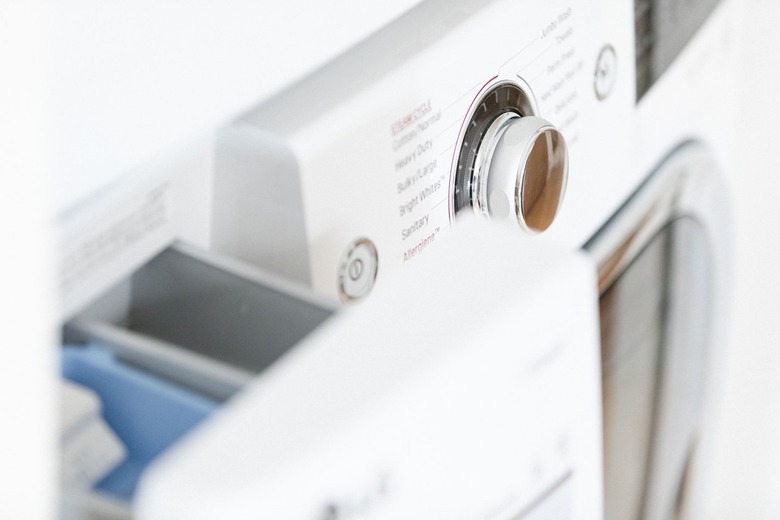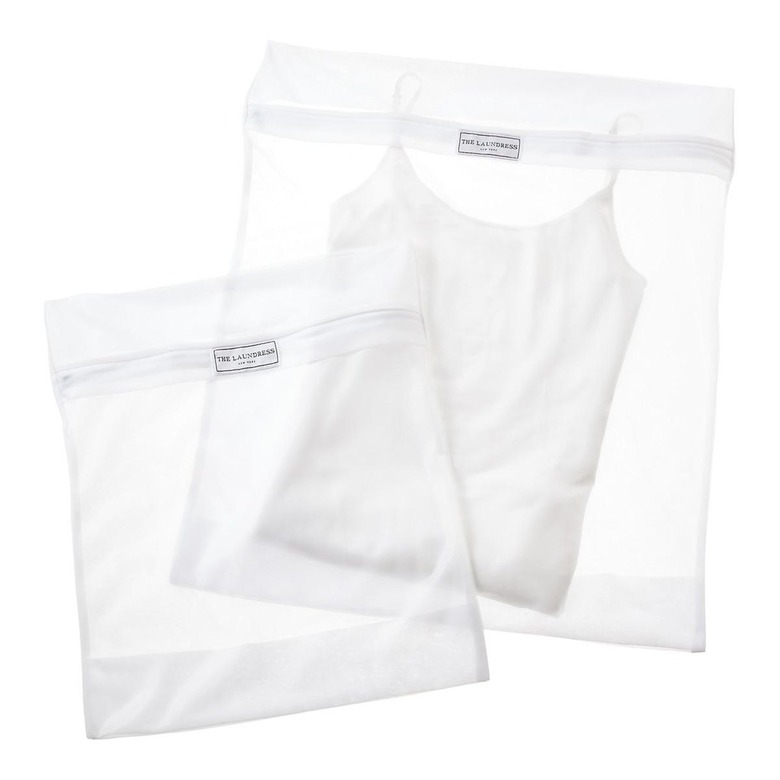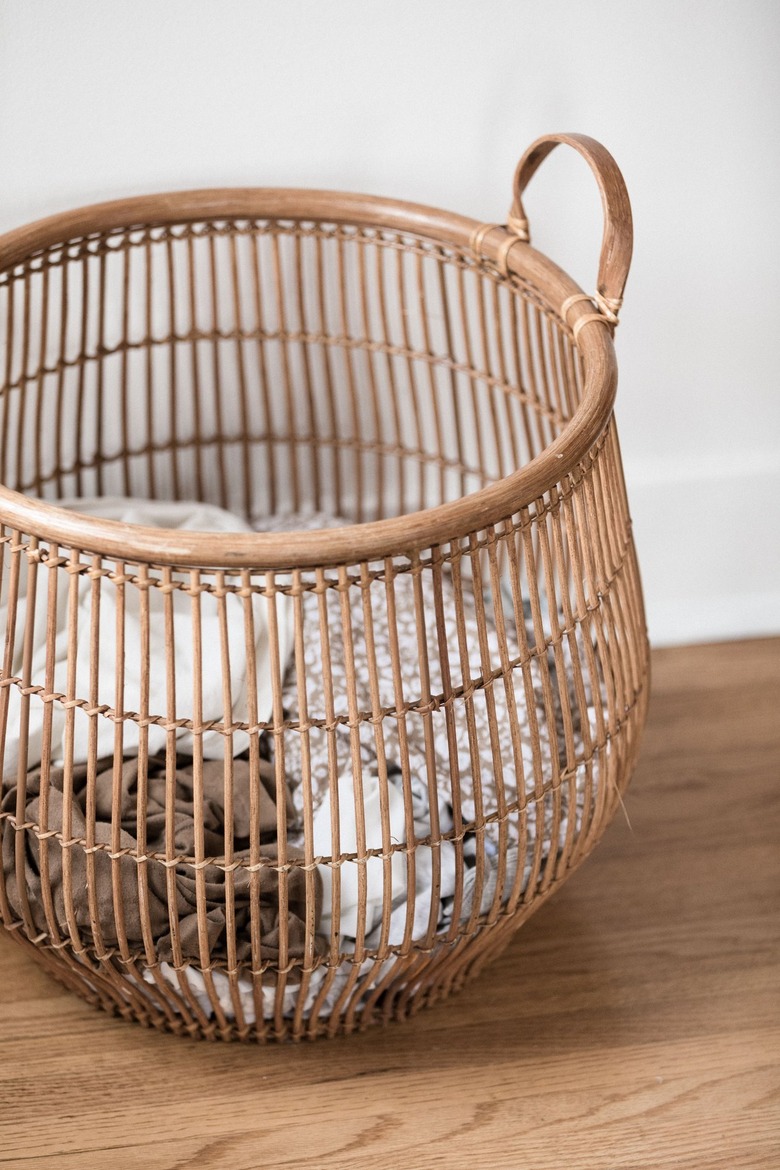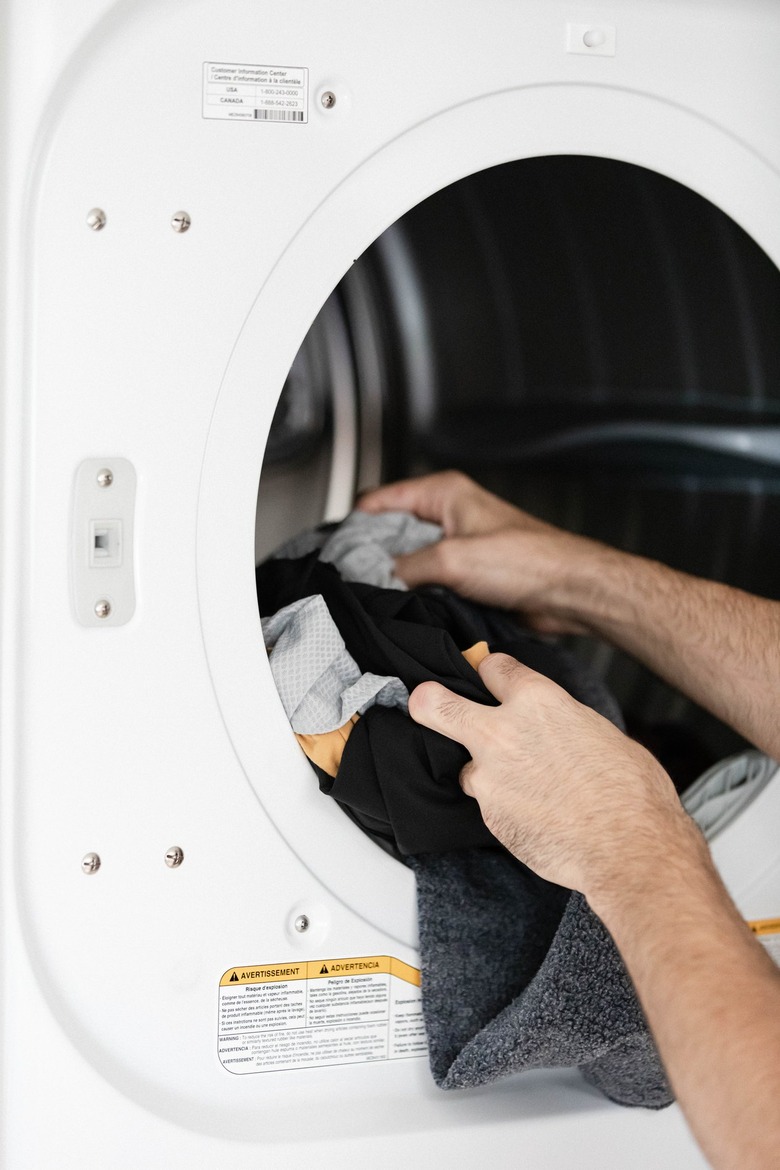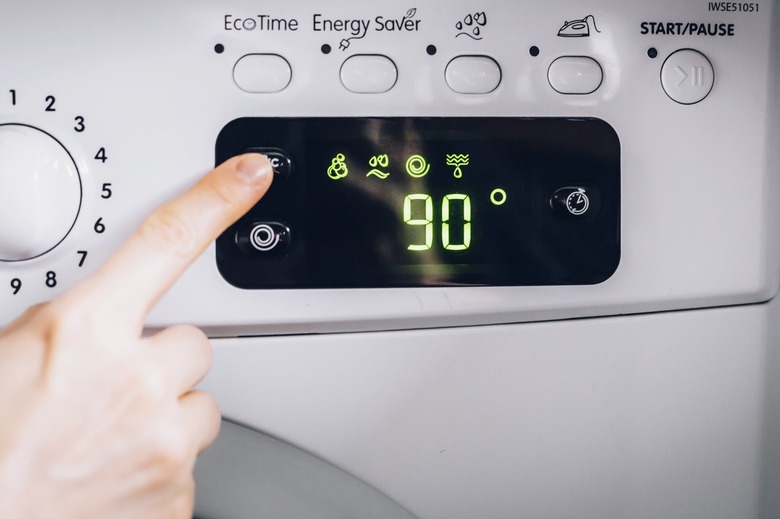6 Washer And Dryer Dos And Don'ts (You Need To Know)
These days, home appliances such as washers and dryers are getting used more than ever — and, truth be told — often require more maintenance to continue running smoothly and to avoid pricey repairs. Just ask any local appliance repairperson. They've been busy! Sales for appliances likewise have increased this past year as people upgraded their washers and dryers, but as engineer W. Edwards Deming said, "If you don't understand how to run an efficient operation, new machinery will just give you new problems of operation and maintenance." Keeping this in mind, whether your laundry room is decked out with new or older washers and dryers, extend their lifespans by following these dos and don'ts.
Do: use a mesh laundry bag for items with straps, fringe, loose metal hardware, and other embellishments.
Do: use a mesh laundry bag for items with straps, fringe, loose metal hardware, and other embellishments.
Mesh laundry bags are not just to protect your delicates. Placing clothing with loose straps or metal in mesh bags will help to prevent such items from wreaking havoc on your washer's and dryer's moving parts.
Don't: overload your machines, especially top-loading machines.
Don't: overload your machines, especially top-loading machines.
While this is a given — any manual will say this — many of us still do it when we're in a rush or impatient, don't we? Keep items loose to allow your clothing to move around freely in order to be washed and dried thoroughly and efficiently. Sears Home Services suggests leaving six inches from the top of a top-loading washing machine, for instance: "Loading laundry around the agitator in a balanced way is the key to the whole operation. If your load is unbalanced, it can cause vibrations strong enough to actually move the machine, which in turn can lead to a costly repair."
Do: check pockets for loose items before putting clothes in the wash/dryer, especially kids' clothes.
Do: check pockets for loose items before putting clothes in the wash/dryer, especially kids' clothes.
From loose change and keys to tissue paper and even cell phones (yes, it happens!), you want to ensure that pockets are clear of such items that can clog your machines. Especially in kids' pockets, you'll find all manner of items — including random crayons — that can lead to unfortunate damage to your clothes and your appliances. You may even find some forgotten cash in your pockets, so take the time to check.
Do: clean your dryer's lint trap after each load and, every six to eight weeks, give the screen a deep clean by washing it with hot water and a brush to remove leftover residue.
Do: clean your dryer's lint trap after each load and, every six to eight weeks, give the screen a deep clean by washing it with hot water and a brush to remove leftover residue.
Dryer maintenance is everything. Don't make the motor work harder than it has to to dry your clothes. Keeping lint trap clean also avoids clogging that could lead to overheating and worse, catching fire.
Do: button and zip up clothing before washing/drying.
This will make doing your laundry quieter, for one, but more importantly will keep buttons and zippers from getting stuck in the machine or caught on other clothing, even if you do use a mesh bag.
Do: use your washer's self-cleaning cycle or run an empty washer through a hot cycle periodically.
Do: use your washer's self-cleaning cycle or run an empty washer through a hot cycle periodically.
Set a recurring calendar reminder to run your machine — while it's empty — through a wash cycle every four to eight weeks, depending on how often you use your washer. Even it needs its own hot shower, especially if you tend to only run cold water cycles. This will help wash away leftover dirt build-up that could prevent your machine from running efficiently. If you have a front-loading washer, also make sure to let the rubber around the door air dry after each wash, by leaving it open, to avoid mold and mildew from developing.
For specifics to your particular machine, definitely read your appliance manual for their best practices! And while you may follow these tips already, we know from experience that often our roommates don't. Leave a friendly Post-It with these tips on your machines to remind everyone in your household to hopefully follow suit until they become habit — and save you appliance headaches.
